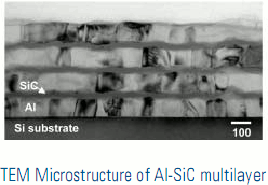Affiliate Members
Ira A. Fulton Professor of Mechanical and Aerospace Engineering
School for Engineering of Matter, Transport and Energy
Arizona State University, Tempe-AZ
Email: aditi@asu.edu
Areas of expertise: Adaptive structures, structural health monitoring, composites, multiscale analysis, multidisciplinary design optimization and reduced order modeling
_________________________________________________________________________________________
Research Areas
Smart Materials in Rotorcraft
Modeling Multifunctional Materials
Novel Rare-Earth Containing Lead Free Solders for Microelectronic Applications
Development of Efficient Sensing Architecture for Damage Detection
Damage Tolerant, Self-healing Shape Memory Alloy Fiber Reinforced Pb-free Solder Composites for Electronic Packaging
Deformation Behavior of Nanolaminate Metal-Ceramic Composites
Smart Materials in Rotorcraft
A major improvement in helicopter performance can be achieved by the implementation of rotor active control technology. Research in this area has been focused on individual blade control (IBC) using self-sensing piezoelectric actuators and active control; active lap control using curved piezoelectric actuators and improvements in aeromechanical stability using Segmented Active Constrained Layer (SACL) damping treatment. Research sponsored by Army Research Office and NASA Ames Research Center.
Development of Efficient Sensing Architecture for Damage Detection
Research has been conducted to address continuous and discrete sensor set designs for in situ damage detection in heterogeneous systems. Both piezoelectric and active fiber composites have been used as sensors. The continuous sensor detected simulated acoustic emissions in composite panels using only one channel of data acquisition. It is expected that such design can potentially reduce the cost, complexity, number of channels of data acquisition, and the weight of monitoring instrumentation; however, research still needs to be conducted in decomposing the sensor signal to characterize the local and global effects. Research sponsored by National Science Foundation.
Modeling Multifunctional Materials
Research has been conducted in developing completely coupled electro-thermo-mechanical models of piezoelectric integrated structures. A new theory has been developed to model the hysteresis relation between polarization and electric field of piezoceramics. An explicit formulation governing the hysteresis is obtained by using saturation polarization, remnant polarization, and coercive electric field. Research has been sponsored by Army Research Office and NASA Langley Research Center.
Damage Tolerant, Self-healing Shape Memory Alloy Fiber Reinforced Pb-free Solder Composites for Electronic Packaging
A method of improving the mechanical properties of lead-free solders is to create a composite containing shape-memory alloy fibers. Utilizing the superelastic transformation behavior of NiTi shape memory wire, it may be possible to deform a specimen beyond its plastic yield stress, and have it return to its original dimensions upon removal of the external force. Single fiber, Sn matrix composites are being fabricated to evaluate the mechanical properties of these new materials. Etched and fluxed wire immersed in liquid Sn at 300°C for 18 hours produces a 20 µm Sn-Ti intermetallic layer, which indicates a strong bond between components that could facilitate load transfer memory wire in pure Sn matrix with 20µm Sn-Ti intermetallic layer. Further research will involve demonstrating superelastic behavior in NiTi/Sn composites, followed by fabrication, testing and microstructural analysis of composites at the solder ball level. The research is sponsored by Intel Corp., through the ASU-Intel Fellowship Program.
Novel Rare-Earth Containing Lead Free Solders for Microelectronic Applications
Pb-free solders pose new problems and challenges associated with their incorporation and reliability during service of electronic components. Recently, a new class of Pb-free solders has been discovered, with characteristics that make them interesting candidates for further study. These new alloys contain very small fractions of rare earth (RE) elements. Using a serial sectioning technique, the complex morphology of these intermetallics was investigated, revealing that they are in fact interconnected dendritic structures. In addition to microstructure characterization, mechanical testing is being conducted to examine the mechanical performance of these materials, and to understand the underlying mechanisms responsible for the observed behavior. Our group was the first to show that small amounts of La to Sn-Ag-Cu solder results in a substantial improvement in their ductility, with small penalties in strength. Dramatic increase in strain to failure is observed with the addition of La. Creep testing is currently being conducted on single lap shear joints. Both bulk and small length scale behavior is being studied. The research is sponsored by Semiconductor Research Corporation (SRC).
Deformation Behavior of Nanolaminate Metal-Ceramic Composites
Multilayered metal-ceramic composites on the nanoscale are attractive materials because of their unique mechanical properties. By proper design of multilayer structures excellent strength and damage tolerance may be obtained. We are processing model Al-SiC multilayered composites multilayers by physical vapor deposition. The microstructure is being examined and the deformation behavior quantified. In particular, we are focusing on
(i) measuring residual stresses, using x-ray synchrotron technique, that evolve during processing,
(ii) probing the mechanical behavior using nanoindentation, and
(iii) modeling the processing and mechanical behavior by continuum and atomistic modeling approaches. Research sponsored by the National Science Foundation.





